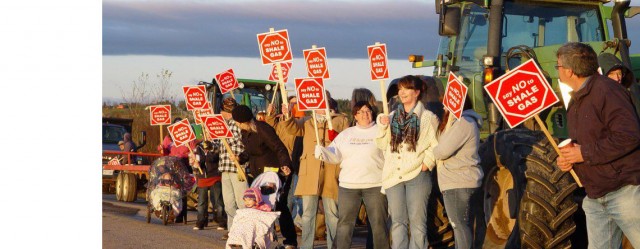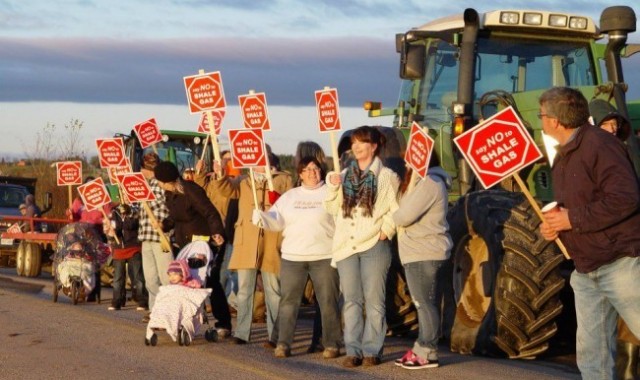Government has released its “Oil and Natural Gas Blueprint” for New Brunswick. It reads like an election platform, with vagaries and cheerleading for the bright future we will all have if we just close our eyes and open our hearts and arms.
The Blueprint promises “responsible development” all the while hoping we’ll forget about all of the previous policy commitments for environmental protection and a resilient economy that have been reneged or recently stalled:
- A Comprehensive Water Management Strategy that was committed in the 2007 Climate change action plan
- The next installment of the Climate Change Action Plan, that was due January 2013
- The Green Economy Strategy
- Water quality standards through the Water Classification Program begun in 1999 and yet to be implemented into law
- The implementation of the Wetland Conservation Policy and enforcement of the Clean Water Act, leaving 50% of the province’s wetlands open to infilling
- The reduction of our greenhouse gas emissions to 10% below 1990 levels by 2020
- And the Energy Blueprint that was released in 2011 after the Energy Commission hearings, with commitments to increasing renewable energy targets, green building and efficiency programs with no mention of shale gas or natural gas playing any significant role in our energy portfolio
There are probably more.
If we want to delve into specifics of why the Blueprint is a misprint, then one of the most disappointing of the objectives is to make sure that environmental management (specifically water and air) “will keep pace with industry development.” It would be much wiser if were proactive about inventorying and protecting our water so we understand the thresholds that can be placed on its use, instead of constantly reacting to pressures by thirsty, waste generating industries. Perhaps if we did that, we could make better decisions on what kind of industries and landuse activities match our collective goals of maintaining healthy rivers, lakes and streams and quality drinking water.
Also disappointing is the complete lack of acknowledgment of climate change while pushing for developing the activities responsible for fueling it. This very same week, the Mauna Loa observatory in Hawaii recorded the global atmospheric CO2 levels at 400 part per million for the first time in 3 million years. That is a significant landmark and something we shouldn’t be celebrating with the release of a blueprint that sets us on track to bust through the next threshold, pushing us closer and closer to catastrophic climate change. The Blueprint mentions the International Energy Agency (IEA) report from 2011 indicating the ‘Golden Age of Gas’, but ironically, forgets to quote the newest IEA’s report (2012) that warns 2/3 of the known fossil fuel reserves must now stay in the ground.
But not to worry, the Blueprint indicates that Environmental Impact Assessment (EIA) will alleviate all of our concerns. It is clear that elected officials have a poor understanding of how an EIA works in New Brunswick. It is not a tool that will decide yes or no to a project. If a project is proposed and registered by a gas company, it will go ahead, perhaps with conditions, but the process will not allow the public or a community to say “no, we don’t want it here”. It doesn’t even provide real opportunities for public input. Sure, you can complain to the company that you don’t like their plan, but government has checked out of providing a meaningful process, like a hearing, tribunal or even official comment period. This is not acceptable. Communities must be empowered to be involved in those decisions, to be in control of making the places they live reflect who they want to be and how they want to get there.
But if that were to happen, maybe shale gas wouldn’t. Not only is there a lack of trust because of failure to follow through with commitments, many people have seen through the rhetoric that is needed to sell this industry. People know there have been water contamination, poor air quality, homes losing value, kids getting sick, pipes leaking and government “Rules for Industry” just aren’t enough this time. People are demanding more, demanding a different Blueprint for a future we can truly close our eyes and imagine.
Stephanie Merrill is the Director of the Freshwater Protection Program, CCNB Action
Also read our response to the “Rules for Industry”, released February 2013


